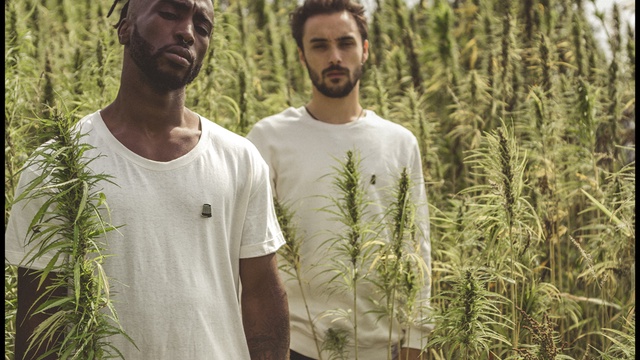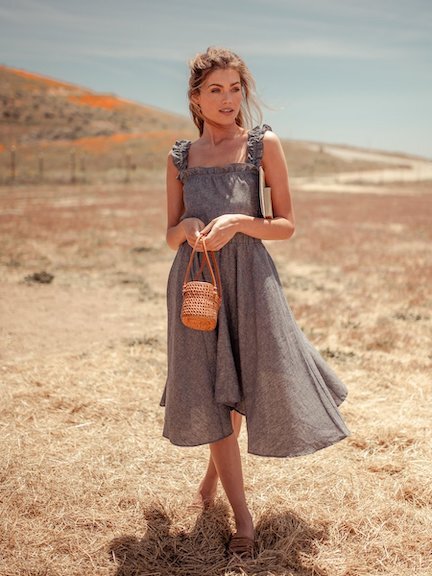Top Reasons On Choosing Hemp Clothing
Wiki Article
Why Is Hemp More Durable, Biodegradable And More Regenerative Than Cotton?
Hemp due to its natural properties and the way that it is grown is thought to be more durable and sustainable than cotton. Here's why- Biodegradability-
Natural Fibers - Hemp's fibres can be biodegradable. Textiles and clothing made of hemp break down over time. The waste is returned to the earth without any permanent negative effects. Compare this to synthetic fibers such as polyester, which may take hundreds of years to decompose.
Hemp Textiles Lack Synthetic Additives - Hemp fibers usually don't contain synthetic additives. They are treated with synthetic chemical additives such as certain dyes or finishings that slow the biodegradation process.
Durability-
Hemp fibers are distinguished by their durability and strength. Hemp clothes are less prone than cotton clothes to wear out, and so lasts longer. Hemp clothes are tough and can be washed more times before they show signs of wear.
Hemp fabrics have a lower tendency to pill (the formation small fuzzy ball that forms on the surface of the fabric) than cotton. This characteristic contributes to their overall durability and quality.
Regenerative Agriculture-
Soil Health Hemp cultivation is regenerative when it is done in a sustainable manner. Hemp has an extensive root system that helps prevent soil erosion and compaction as well as enhance soil health by aerating soil and increasing the activity of microbial. This regenerative quality could make the land more to be suited for future crops.
Low environmental impact Sustainable hemp farming practices make use of fewer herbicides and pesticides that reduce the damage to the environment. Contrary to conventional cotton farming can lead to the degradation of soils and pollution of water due to its reliance on synthetic chemicals.
Water Efficiency-
Hemp is a plant that requires less water than cotton. Its drought-resistant nature means it is able to thrive even with little irrigation, or even in conditions that are rain-fed. This makes the plant an ideal choice for areas where water is scarce like dry areas.
Hemp is an excellent crop to incorporate into rotational systems. It will help improve the health of soil and reduce the likelihood of disease development and soil loss. In cotton farming the practice of crop rotation is less widespread.
Hemp has plenty of potential. It is able to make a range of products, such as paper, clothing construction materials, textiles. Its versatility lets hemp be utilized in a broad spectrum of industries using the use of sustainable and regenerative methods.
While hemp offers these advantages but it's important to know that both cotton and hemp can be grown sustainably or unsustainably, depending on farming practices and the methods used to process them. The environmental benefits of hemp can be enhanced by choosing hemp products that have been produced in a sustainable manner and using eco-friendly methods. By choosing organic cotton, you can help reduce environmental issues associated with traditional cotton production. Read the top rated hemp clothing for website info including organic hemp underwear, hemp clothing womens, hemp boxer shorts, patagonia volley shorts, hemp tank top, hemp fabric, hemp pants mens, hemp bathing suit, hemp boxer shorts, hemp clothing womens and more.

What Gives Hemp Fibers Their Breathable, Moisture Wicking And Thermoregulating Properties?
Hemp fibers possess distinct chemical and structural properties that make them breathable moisture-wicking and thermoregulatory. These properties result from the combination of the following elements- Microscopic Structure- Hemp fibers have a hollow, porous structure which allows air to circulate through the fibers. The porosity of hemp fibers allows them to be extremely breathable. When knitted or woven into fabric, this structure permits air to circulate through and promotes ventilation while preventing the entrapment of moisture and heat against the skin.
Hemp fibers are able to absorb water and wick away moisture. Hemp fibers are able to remove moisture or sweat from your body, eliminating the feeling of wetness. They also spread moisture across a wider surface which allows it to evaporate faster. The properties of hemp that wick moisture away keep you dry and comfortable while doing exercises or exercising in hot conditions.
Hemp fibres have natural insulation properties. If it's cold, they keep the body's heat and provide warmth. They also allow moisture and excess heat to escape in hot weather and help to reduce heat. The inherent thermoregulatory properties of hemp clothing make hemp clothing ideal for a range of temperatures.
Hemp fibers are naturally antimicrobial properties that prevent the growth of odor-causing bacteria. This is a factor in the freshness and protection from the odor of hemp clothing in time of exercise.
Hemp fibers are tough and durable. They can last for a long time. Wearing hemp fibres will maintain their breathable and moisture wicking ability even after many washings and use. This durability allows hemp garments to last longer, which reduces the requirement for replacement and, therefore, their environmental impact.
UV Protection Hemp fibers are an organic UV protector, protecting the skin from damaging UV radiation. Hemp clothing is versatile due to its UV blocking properties. It's perfect for outdoor activities.
These characteristics are inherent in hemp fibers and are not dependent on chemical treatments or additives. Hemp's natural characteristics make it an eco-friendly and a comfortable fabric, particularly for activewear, outdoor clothes and warm-weather clothing. Since hemp fibers can be processed and then woven, they retain their natural properties which makes them an eco-friendly, functional fabric. Take a look at the top rated hemp clothes url for site tips including organic hemp underwear, mens hemp trousers, hemp golf shirts, hemp yoga clothes, hemp garments, hemp sportswear, hemp shirts mens, hemp t shirts wholesale, hemp boxer shorts, womens hemp clothing and more.
What are the differences between hemp and bamboo fibers?
Both bamboo and hemp fibers are plant-based fibres that are utilized to make textiles. Each has its own unique qualities and features. Here are some of the major distinctions between bamboo fiber and hemp fibre- 1. Plant Source-
Hemp- Hemp fibres are formed from the outer layer of stalks. Hemp has been utilized to serve a variety of purposes throughout the years. Hemp is a rapidly growing and adaptable plant.
Bamboo Fibers- Bamboo fibers are made from the pulp. Bamboo is an extremely quick-growing grass that is known for its durability and rapid renewal.
2. Fiber Specifications-
Hemp Fibers- Hemp's fibers are strong and durable. They're one of the strongest natural fibers and become softer every time they're washed, so they're great for creating textiles.
Bamboo Fibers- Bamboo fibers are known for having a silky, soft texture. They're not as sturdy as hemp fibers and can be more delicate, but they are prized because of their softness against the skin.
3. Texture & Feel
Hemp- Hemp fabric has the appearance of a coarse and rough texture, especially in its natural state. It's comfortable, but the texture is different from bamboo.
Bamboo- Bamboo fabric is smooth, silky, and luxuriously soft. It is often compared to silk, which is a blend of twill, which makes it extremely cozy.
4. Breathability is crucial, as well as moisture-wicking.
Hemp- Hemp is naturally and breathable. Hemp also absorbs moisture. They can keep you cool and dry in hot conditions.
Bamboo Fibers- Bamboo fibers are known for their an excellent amount of breathability as well as moisture wicking. They are made up of micro-gaps that improve their ability to regulate temperature and humidity. This helps you stay comfortably in various circumstances.
5. Environmental Impact-
Hemp Hemp is a type of fiber which is considered green due to the fact that it requires very little water, grows rapidly and has a good resistance to pests. It also lowers herbicide and pesticide usage. It is also able to absorb carbon through its growth process.
Bamboo is a popular choice for sustainable building materials. It is fast growing, requires minimal water, and is able to be grown without chemical herbicides or pesticides. Certain varieties of bamboo are thought to be extremely sustainable, like Moso bamboo.
6. Processing-
Hemp- Hemp fibres need intensive processing to separate out the outer bast fibers and the inner woody core. The process can involve retting and decortication as well as mechanical separation.
Bamboo The bamboo fibers are obtained using a chemical called the viscose or rayon process. This is accomplished by making use of chemicals to break down the bamboo into a pulp. This process can create environmental concerns if it is not managed properly, some bamboo fabrics use closed-loop systems to reduce the waste of chemicals.
7. Versatility-
Hemp- Hemp fibers are flexible and can be utilized in a variety of uses, such as clothes, textiles, paper building materials, and more.
Bamboo fibers- Bamboo fibers are used primarily in textiles and clothing, however they can also be found in other items such as sheets and towels.
Both bamboos and hemps have benefits in terms of sustainable and distinctive qualities. Choose between hemp and bamboo according to the qualities and characteristics you're looking for and your environmental preferences. See the top rated bamboo clothes for more advice including freefly hoodie, bamboo polo shirts, bamboo shirt, bamboo button down shirts, bamboo tee shirts wholesale, bamboo pants for women, bamboo ladies clothing, boody ecowear, bamboo boxer shorts, bamboo fiber t shirt and more.

